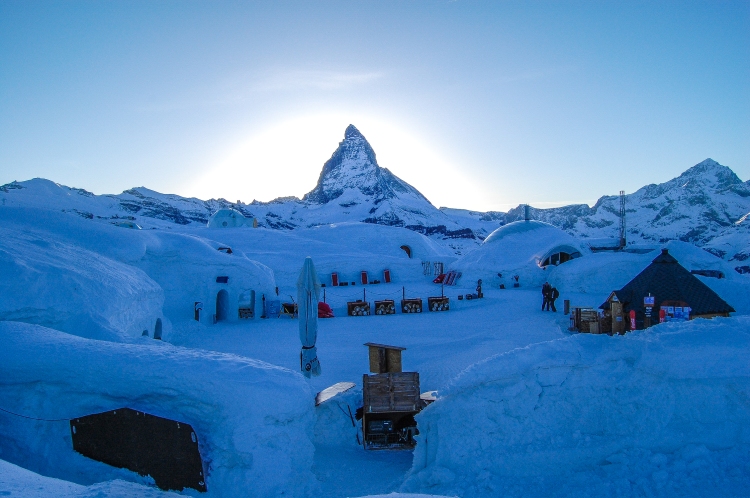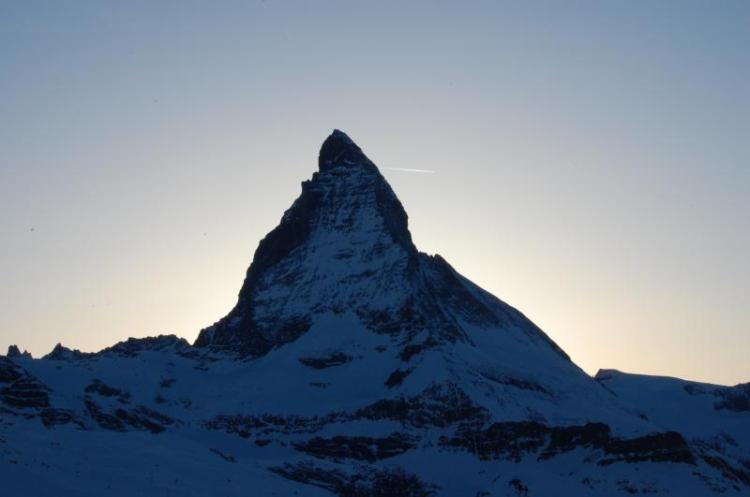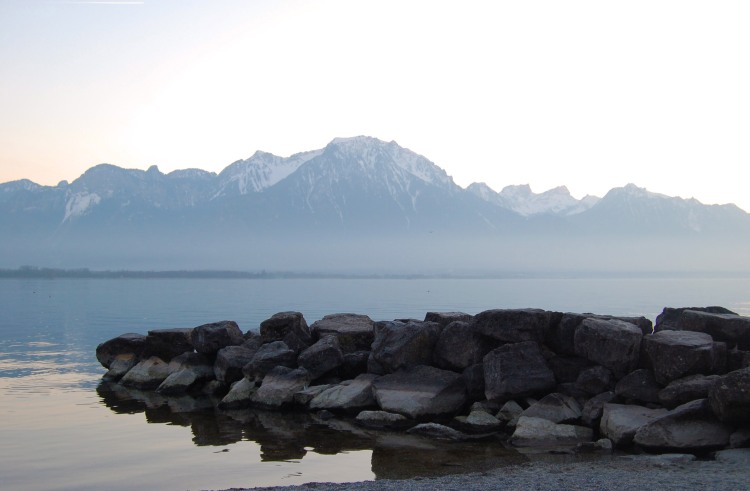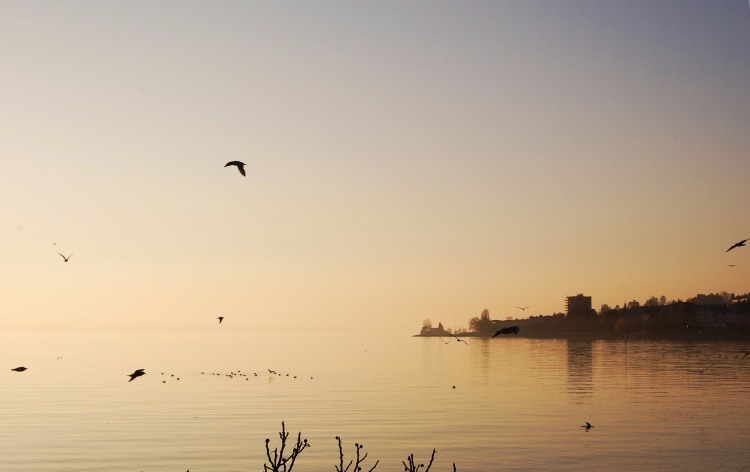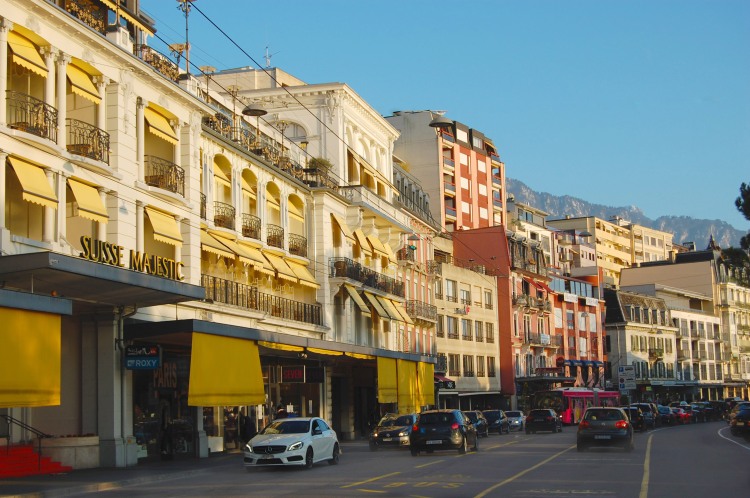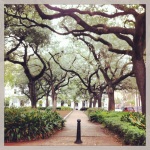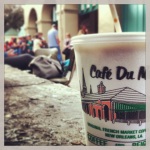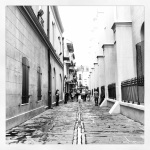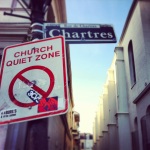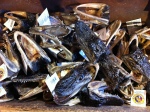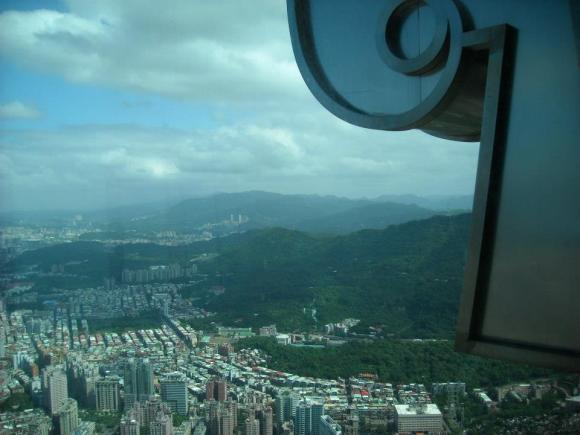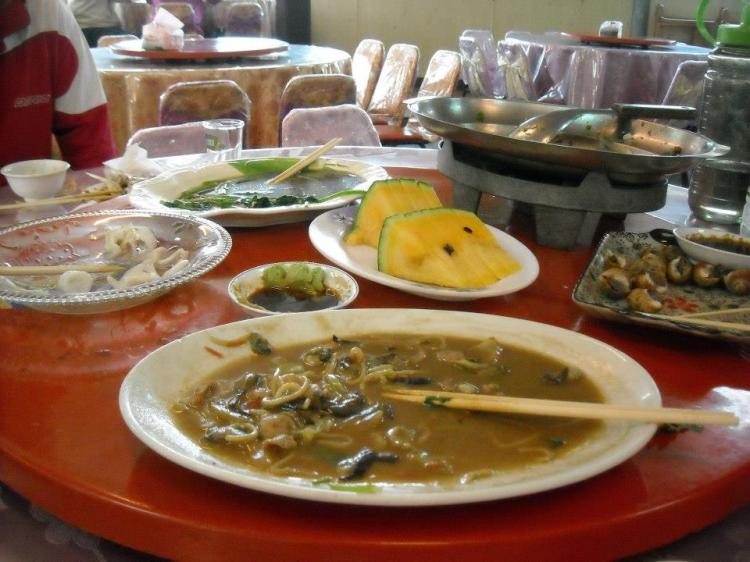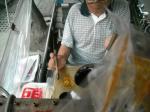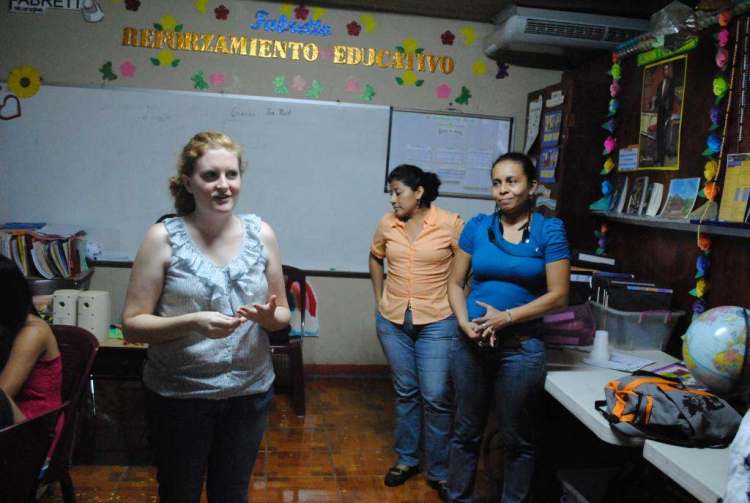Rounding the corner, we received our first glimpse of Iglu-Dorf, a 15-room village located in the heart of the Swiss Alps. Melted by the sun and rebuilt each year by the skilled hands of craftsmen, the village features an ice bar, a conference area (equipped with an unlimited supply of tea and hot soup), a dining area, lobby, wooden Kota, jacuzzi, sauna, public bathroom and accommodations ranging from the Standard Room, which sleeps six, to a super high-end Romantic Suite for two. Mr. Photog and I opted for the Standard. Dropping our bags in the lobby, we were taken on a tour of the grounds by Philip and his colleague, Chris. They explained the differences between the various room categories and allowed us to get familiarized with the rooms before giving us our assignments – Mr. Photog, myself and one other guest were relegated to Room One. A sextet of sleeping bags had already been arranged for us, each able to withstand subzero temperatures. We were also given light sleeping bag liners and a small pillow, the bare necessities to keep us from freezing to death.
Dinnertime and the pungent smell of fondue is wafting throughout the village. To the Swiss, this traditional dish is known as Moitié-Moitié (meaning half-half) and is made with Gruyère and Vacherin Fribourgeois. Mr. Photog and I order a 15 CHF apéritif consisting of several slices of cheese, two small sausages, two apricots, two walnuts, two pecans and two glasses of Champagne. Taking my skewer, I push a cube of crusty bread onto the sharp metal tip and swirl it in the silky cheese mixture. The entire group, including Philip and Chris, are sitting around the table (our ice seats are overlayed with thick furs) laughing and conversing in French, German and Romansh. An older gentleman sitting across from me celebrated a birthday yesterday and has offered Mr. Photog and me some wine. We happily oblige.
After dinner, a short break and then a few of us head outside for a moonlight snowshoe outing. A quick tutorial and I am adjusting straps and maneuvering my feet expertly into the snowshoes. In a straight line, we follow Philip out of the village and into the darkness beyond. A faint veil of golden light has slipped over the mountains creating a kind of ethereal glow that only enhances the fairy tale-like feeling I had at that moment. We continue our ascent, the steely teeth on our snowshoes creating a distinct crunch with every step, our breathing labored at the high altitude. When we finally reach our destination, Philip asks us to turn off our headlamps and stand in silence. At that moment my lungs fill gratefully with icy mountain air. Around me I am surrounded by a family of rippling peaks, miles of virgin snow blanketing the world as far as the eye can see. I feel incredibly and utterly alive in my own skin. Not a sound to distract my thoughts, not a place to be, not an email to write, not a worry or fear in the world at that moment. Beneath the stars, I stood with that little group of people I had met only hours earlier feeling connected to them in a way I knew I would never be with anyone I knew back home. After a celebratory shot of caramel-flavored vodka, we embarked on our descent and readied for warm brownies in the Kota and a dip in the Jacuzzi.
- The entrance to Iglu-Dorf.
- The majestic Matterhorn, our view for the night.
- A look inside one of the suites. The theme for this year’s igloo was Greek mythology.
- A look inside one of the romantic suites.
- The conference area.
- The skiers’ fondue lounge!
- The Kota: where we convened for a post snowshoe outing brownie by the fire.
